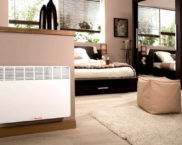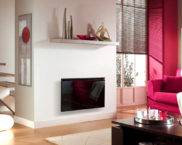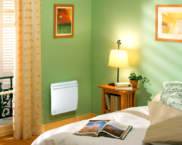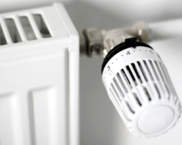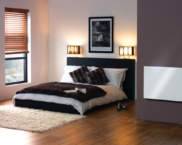What are the best heating radiators for an apartment: issue price and calculation
Repair in apartments of the old fund often requires a complete replacement of all heating radiators. The cast-iron monsters of the Soviet period cannot last forever, moreover, their efficiency leaves much to be desired. A natural question arises: which heating radiators are better for an apartment? Product price is not the only selection criterion. It is important to think over everything to the smallest detail - from the aesthetic component to practicality and economy.
The content of the article
- 1 What heating radiators are better to put in an apartment: types, disadvantages and disadvantages
- 2 Which radiators are better: aluminum or bimetallic?
- 3 Selection and calculation
- 4 What are the best heating radiators for an apartment: the price of products and manufacturers
- 5 Installation tips
- 6 Outcome
- 7 Video: how to choose heating radiators
What heating radiators are better to put in an apartment: types, disadvantages and disadvantages
Heating devices are made of various materials, each of them reacts differently to pressure and temperature. So, the types of heating batteries in the apartment:
Convector steel batteries
These are panels and pipes, between which metal plates are installed. The heating medium circulates in the panels. These devices are believed to have the highest heat dissipation.
Such devices are very popular among the owners of country houses. Steel heaters are produced in the Czech Republic, Italy, Finland. They differ in the number of sections and metal edges.
Positive aspects of steel radiators:
- good heat dissipation;
- low power consumption;
- low inertia;
- environmental friendliness;
- affordable price.
Cons of steel batteries:
- tendency to form rust;
- instability to water hammer.
It is the last minus that is a significant obstacle to installing a steel heater in a multi-storey building. When deciding which radiators are better for an apartment, steel heaters should be considered last.
Cast iron batteries
These products are considered the cheapest and most durable.
Art Nouveau or retro cast iron is produced in England, France and Turkey.These radiators withstand up to twelve bar pressure and coolant temperature up to one hundred and ten degrees. Thus, water hammer and boiling of water in the heating system are not terrible for them.
Advantages of cast iron heating systems:
- half a century service life;
- resistance to temperature and pressure of centralized heating systems
- long-term heat conservation, slow cooling.
Disadvantages:
- heavy weight, which requires particularly strong fasteners;
- long warm-up period;
- a large amount of coolant used;
- fragility.
Aluminum heaters
Solving the problem “How to choose heating radiators for an apartment with central heating”, unfortunately, products made of lightweight and durable aluminum should be excluded from the list. These batteries have the most better thermal conductivity and an attractive exterior. But they are completely unsuitable for use in a centralized heating system due to their instability to water hammer.
Aluminum heaters are available in lithium and extrusion types and can withstand pressures up to only 16 bar.
Therefore, if the apartment has its own boiler, it is difficult to find better than these radiators.
Benefits:
- light weight and size;
- high heat transfer;
- fast warm-up;
- profitability;
- Availability thermoregulation;
- neat appearance.
Disadvantages of aluminum heaters:
- short service life - up to fifteen years;
- weak convection;
- chemical instability of the material;
- inability to resist water hammer.
Bimetallic products
At first glance, these batteries are very similar to aluminum ones. Their body is made of this lightweight metal, and the interior is made of steel elements.
Bimetallic heaters are produced in Russia and Italy.On sale you can find pseudo-bimetallic products, additionally reinforced with steel verticals. They are less resistant to corrosion, but they are distinguished by increased heat transfer.
Advantages of bimetallic products:
- high heat transfer;
- resistance to water hammer;
- ease of installation;
- aesthetics.
Minuses:
- high price.
Which radiators are better: aluminum or bimetallic?
In this question, there can be only one answer: of course, bimetallic heaters are the best choice. They not only combine all the advantages of aluminum and steel products. These batteries are distinguished by their increased strength and resistance to water hammer, which often threatens district heating systems and is the main cause of numerous accidents in heating networks.
Helpful information! Bimetallic devices withstand pressure up to twenty atmospheres!
Selection and calculation
So, how to choose heating batteries (radiators) for an apartment in an apartment building:
- The devices must maintain a pressure of at least 15 atmospheres.
- Heaters must withstand water hammer.
- The design of the device must be resistant to corrosion and chemical attack.
- The heat transfer indicators of the device should be studied.
- Batteries may not last forever, but the longer they last, the better.
How to calculate the number of radiators
For the calculation you need measure the area of the room... This is a challenge for a third grader: you need to multiply the width by the length. For example, a standard room 3x5 m = 15 sq. meters of area.
To heat an apartment located in central Russia, an average of 41 W of heat energy per square meter is required. Multiply 15 by 41 to get 615 watts.For our own peace of mind, let's round up the figure to 650.
Each modern battery has technical documentation, which indicates its thermal power. It remains only to select the required number of sections. The proposed calculation option is very conditional and does not take into account the specifics of a particular apartment. therefore we suggest using the calculator below.

If the apartment is located in the corner of the house, it is better to make a small supply of sections in case of severe frosts
What are the best heating radiators for an apartment: the price of products and manufacturers
Despite the fact that the choice of heating devices on the domestic market is very wide, there are undoubted leaders among manufacturers who have earned an impeccable reputation:
- Smart (China);
- Kermi (Germany);
- Purmo (Finland);
- Rifar (Russia);
- Royal (Italy);
- Global (Italy).
To solve the problem, what are the best heating radiators for an apartment, the price of the product is not decisive, but it remains an important factor. Below are the most popular battery models.
Table 1. Overview of popular models of radiators
Installation tips
- It is important to make a preliminary calculation of the number of radiators and determine the places for their installation.
- Heating devices are installed at a distance of at least three centimeters from the wall surface and ten from the floor. To increase heat transfer, a heat-reflecting screen can be installed between the grid and the heater.
- It is important to observe horizontal position during installation heater.
- The heater mountings must be firmly fixed. Any misalignment of the battery can lead to malfunction of the entire system.
Outcome
So, what are the best heating radiators for an apartment? The price of the products ranges from three to twenty thousand rubles. For a multi-storey building, bimetallic and cast iron heaters are ideal, capable of withstanding high temperatures and emergency situations of centralized heating. If there is an autonomous heating system in the apartment, the best choice would be aluminum radiators, which are distinguished by aesthetics, durability and ease of maintenance.
Video: how to choose heating radiators

























